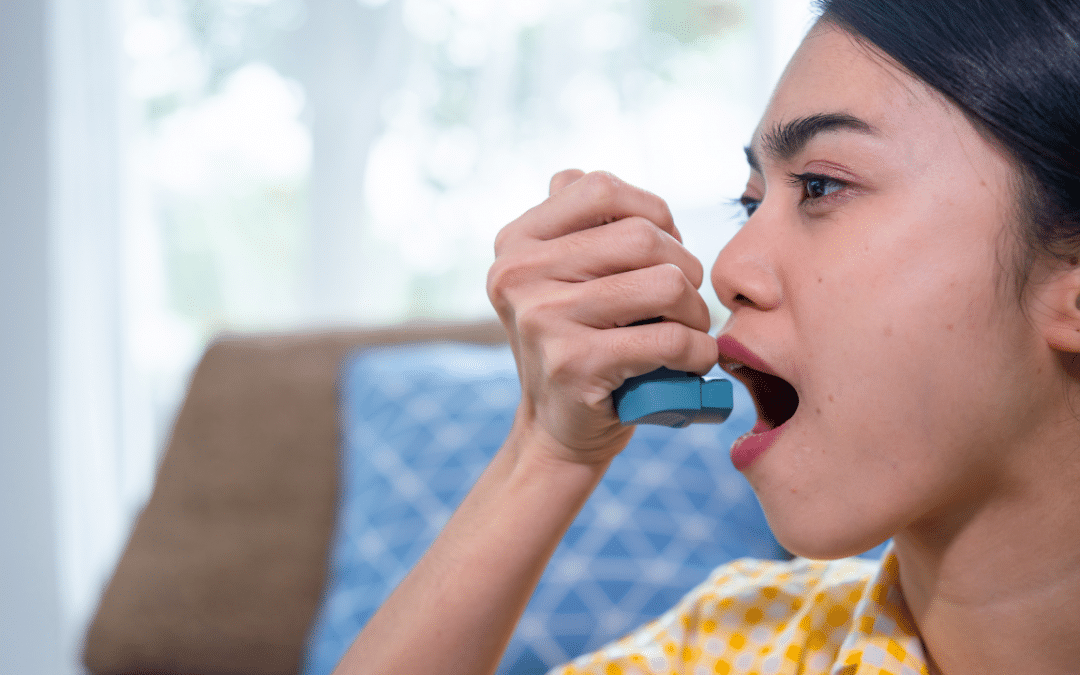Imagine you’ve just spent the afternoon scrubbing down your kitchen, only to find yourself struggling to breathe, with your chest tightening and your inhaler now a necessary companion. It’s a frustrating irony that the very products you use to clean your home can trigger asthma symptoms, making what should be a sanctuary into a hazardous zone.
As you seek ways to maintain a clean and healthy living space, you’re likely aware that choosing the right products and techniques is crucial for your respiratory health. It’s not just about swapping out strong bleach for gentler solutions; it’s about understanding the subtleties of asthma-safe cleaning protocols that can make all the difference.
Stick with us, and you’ll uncover strategies that can help you keep your home sparkling without compromising the air you breathe – strategies that might just change the way you approach your daily chores.
Cleaning Product Selection
Choosing the right cleaning products is crucial for individuals with asthma, as certain ingredients can trigger respiratory symptoms. You must scrutinize labels, avoiding volatile organic compounds (VOCs), fragrances, and ammonia, which can exacerbate asthma. Opt for products with a certification mark from the Asthma and Allergy Foundation of America (AAFA), ensuring they’re scientifically tested to be more suitable for people with asthma.
Seek out non-toxic, hypoallergenic formulas, or consider homemade solutions like diluted vinegar, which can be effective and safer alternatives.
Remember, the goal isn’t just cleanliness, but maintaining an environment that supports your respiratory health.
Always ensure adequate ventilation during cleaning to minimize inhalation of any irritants, safeguarding your freedom to breathe easily in your own home.
Home Environment Management
Maintaining an asthma-friendly home environment requires diligent control of airborne triggers. This includes dust mites, pet dander, and mold spores, to prevent exacerbation of asthma symptoms.
You’ll want to regularly wash bedding in hot water to eradicate dust mites. Additionally, use high-efficiency particulate air (HEPA) filters in your vacuum and air purifier to capture fine particles that can irritate airways.
Ensuring adequate ventilation, particularly in areas prone to dampness, effectively curtails mold growth. It’s also advisable to keep indoor humidity below 50% to inhibit dust mite proliferation.
Opt for allergen-impermeable covers for mattresses and pillows, and maintain a routine cleaning schedule. By implementing these strategies, you can create a haven that supports respiratory health and fosters an environment where you’re free to breathe easier.
Statistics
- Adults are four times more likely to die from asthma than children.
- Studies indicate that Vitamin D deficiency has been associated with an increased risk of asthma attacks in children and adults.
- Around 44% of all asthma hospitalizations are for children.
- There has been a consistent rise in asthma rates since the early 1980s across all age, sex, and racial groups.
- In a given year, at least 1 in 12 women in the US report having asthma, compared to 1 in 18 men.
- The approximate five-year survival rate after an individual is hospitalized for asthma is 80%.
- Nearly 3 of 5 asthma cases in children could be prevented by reducing indoor exposure to allergens and tobacco smoke.
- Globally, asthma affects an estimated 262 million people and caused 461,000 deaths in 2019.
- Indirect costs of asthma, including lost earnings due to illness or death, are estimated at $5.9 billion per year.
- Almost 60% of children with asthma in the United States report having one or more asthma attack in the past year.
- Severe asthma represents about 10% of asthma cases, but it accounts for the majority of the asthma healthcare burden.
- It is estimated that asthma accounts for over 14 million lost workdays for adults annually in the United States.
- The average number of school days missed annually due to asthma in the United States is 13.8 million.
- Approximately 24% of people with asthma in the United States smoke, further complicating their condition.
- The annual economic cost of asthma, including direct medical costs from hospital stays and indirect costs such as lost workdays, amounts to approximately $56 billion in the United States.
External Links
- National Heart, Lung, and Blood Institute covers diverse aspects of asthma, including management, treatments, and ongoing research.
- Mayo Clinic provides detailed information about the symptoms, causes, and treatment of asthma.
- Healthline provides accessible and easy-to-understand information on asthma signs, symptoms, and care strategies.
- National Health Service (NHS) UK offers practical advice on living with asthma, treatment options, and patient stories.
- World Health Organization provides a global perspective on asthma, including prevalence, impact, and strategies for control.
- Asthma UK’s page on pollution provides insights on how air quality affects asthma and how to minimize risks.
- Asthma.com is an educational website that provides asthma management tips, tools, and stories from patients.
- European Respiratory Journal features medical research articles and the latest discoveries in respiratory diseases and treatment.
- American College of Chest Physicians provides clinical resources and guidance on respiratory health, including asthma.
- Asthma and Respiratory Foundation NZ aims to provide resources, educate and raise awareness about respiratory diseases including asthma in New Zealand.
- Pediatric Asthma Initiative is focused on improving pediatric asthma management and outcomes in diverse healthcare settings.
- Royal Children’s Hospital Melbourne shares clinical practice guidelines on pediatric asthma care.
- Asthma Society of Ireland offers advice, support, and resources to manage asthma for Irish residents.
- American Lung Association offers support for those with asthma and resources to help manage the condition effectively.
- Asthma Canada focuses on education, advocacy, and research to improve the lives of Canadians with asthma.
- WebMD’s asthma section offers insights into asthma triggers, medications, and lifestyle tips for managing asthma.

